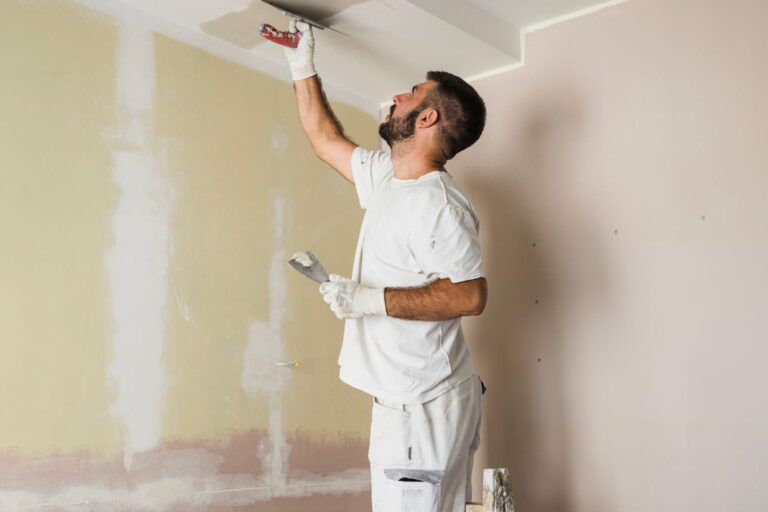
Why is it so expensive to paint a house?
Why house painting can feel like such a big hit to your wallet? Painting your home involves more than just brushing on some colour.
From the size of the house affecting the volume of paint needed to the quality of paint chosen and the essential preparation work required—each aspect plays a crucial role in the overall cost.
Labour costs reflect the skilled workmanship necessary to get the job done right. Let’s see what makes house painting a substantial but valuable investment.
The Impact of House Size on Painting Costs
When it comes to house painting, the size of your home plays a pivotal role in determining the overall cost. Larger homes require more paint and more hours of labour, which naturally increases the expense.
For instance, painting a small two-bedroom house will be considerably less costly than a sprawling four-bedroom property. The relationship between square footage and the amount of paint needed is straightforward: more square footage means more wall space to cover.
This also extends to labour; larger homes take longer to prep and paint, escalating the labour costs significantly.
Choosing the Right Paint Matters
Selecting the right type of paint is crucial not only for the aesthetics of your home but also for its longevity and the overall cost of the project.
Different types of paint vary significantly in cost, with higher-quality options being cost-effective in the long run.
High-quality paints offer better coverage, meaning fewer coats are needed, and they tend to be more durable, which reduces the need for frequent touch-ups.
Using premium paints also affects the material costs of house painting but ensures that the finish lasts longer, protecting your home against the elements and wear over time.
Why Skilled Labor Isn’t Cheap?
The labour costs in house painting reflect the expertise and skill of professional painters. Skilled labour isn’t cheap because experienced painters bring precision, efficiency, and an eye for detail that unskilled labour simply cannot match.
Professionals understand the intricacies of preparation work, from sanding and priming to protecting your furnishings and flooring. They also know how to apply each type of paint for optimal results, which justifies the higher labour costs.
Investing in skilled labour ensures that the house painting is done right the first time, avoiding costly mistakes and ensuring that the quality of paint and the meticulousness of the preparation work pay off in the long-term durability of your paint job.
Preparation Work: A Crucial Cost Factor
Before a paintbrush even touches your walls, extensive preparation work is needed to ensure the longevity and aesthetic quality of your house painting project. This phase includes cleaning the walls to remove dirt and grime, which can affect paint adhesion.
Sanding is also crucial to smooth out any imperfections and create a uniform surface that will hold the paint better. Priming is another vital step for achieving vibrant colour and even coverage.
This preparation work is essential not just for the aesthetic outcome but also for preventing future issues like peeling or chipping, which could inflate costs if repairs are needed later.
Additional Factors Influencing Painting Costs
Beyond the direct costs of materials and labour, house painting can involve several hidden expenses that homeowners might not initially consider.
For instance, if the walls have damages such as cracks or holes, these need to be repaired before painting can commence. This repair work adds to the overall cost of both materials and labour.
Safety equipment and ensuring compliance with local regulations also contribute to the cost. Professional painters must use the proper scaffolding, masks, and other safety gear to protect themselves, especially when working at heights or with potentially hazardous materials.
These safety measures are not just additional costs but are essential for lawful and safe operation during the house painting process.
Understanding these less apparent aspects of house painting helps in planning a budget that accommodates all potential expenses, ensuring a smooth and successful enhancement to your home.
Conclusion
House painting involves considerable costs, from the size of your home impacting material and labour costs to essential preparation work and unexpected expenses like safety equipment.
While the initial price may seem high, the investment significantly enhances your home’s appearance and value.
Looking for a precise estimate tailored to your needs? Reach out to Emburys Carpentry, where our experts are ready to help you every step of the way.
Frequently Asked Question
Hiring a professional painter ensures high-quality results that last longer and look better. Professionals handle all aspects of the job, from preparation to final touches, which can prevent costly mistakes and deliver a flawless finish.
The cost of hiring professional painters in the UK varies widely based on factors like the size of the area, the type of paint used, and the extent of preparation needed. Generally, you can expect to pay anywhere from £100 to £400 per day for a professional painter. For a more detailed estimate, consulting with local painters or a professional service like Emburys Carpentry is best.

